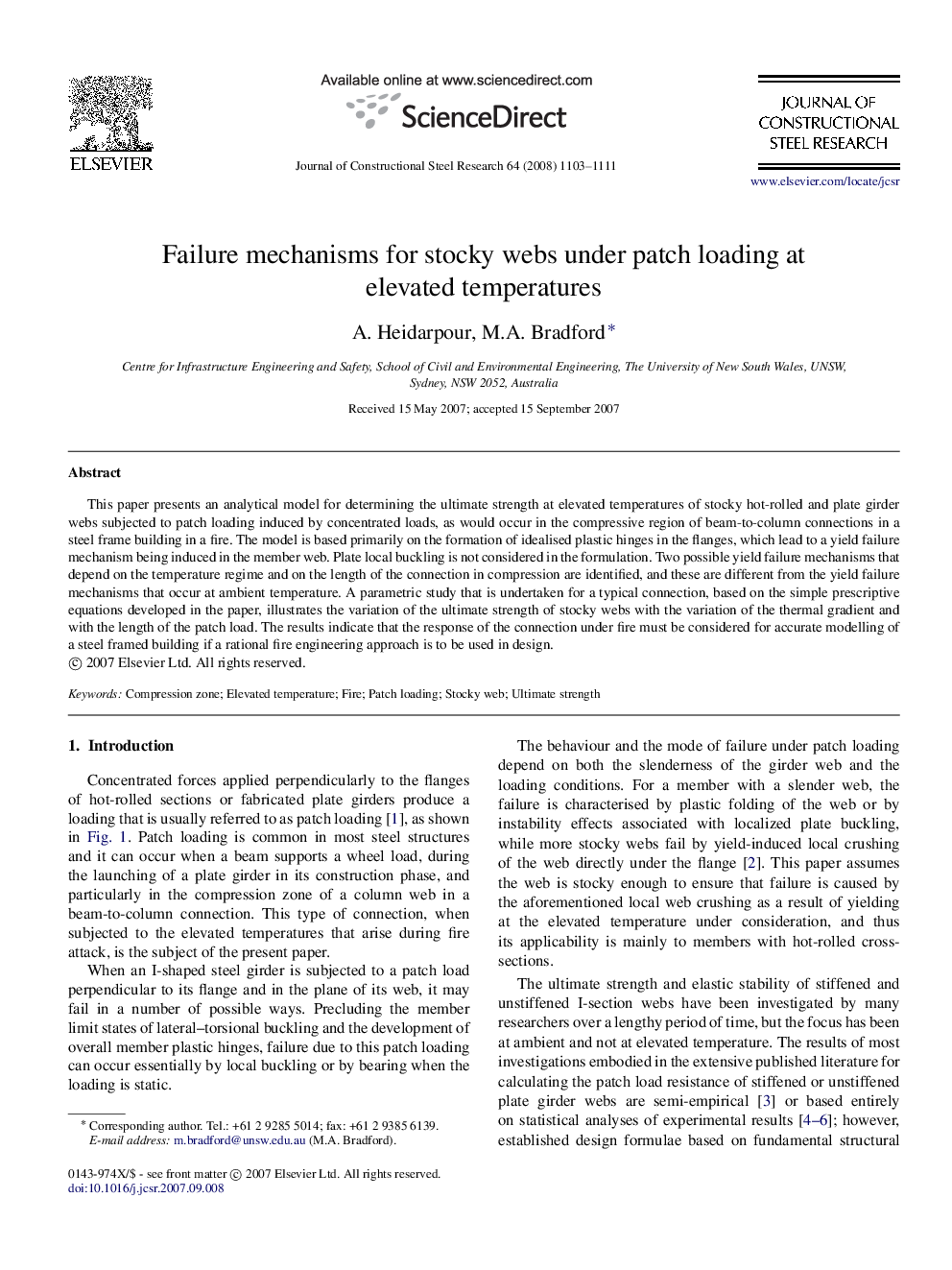| Article ID | Journal | Published Year | Pages | File Type |
|---|---|---|---|---|
| 286102 | Journal of Constructional Steel Research | 2008 | 9 Pages |
This paper presents an analytical model for determining the ultimate strength at elevated temperatures of stocky hot-rolled and plate girder webs subjected to patch loading induced by concentrated loads, as would occur in the compressive region of beam-to-column connections in a steel frame building in a fire. The model is based primarily on the formation of idealised plastic hinges in the flanges, which lead to a yield failure mechanism being induced in the member web. Plate local buckling is not considered in the formulation. Two possible yield failure mechanisms that depend on the temperature regime and on the length of the connection in compression are identified, and these are different from the yield failure mechanisms that occur at ambient temperature. A parametric study that is undertaken for a typical connection, based on the simple prescriptive equations developed in the paper, illustrates the variation of the ultimate strength of stocky webs with the variation of the thermal gradient and with the length of the patch load. The results indicate that the response of the connection under fire must be considered for accurate modelling of a steel framed building if a rational fire engineering approach is to be used in design.
